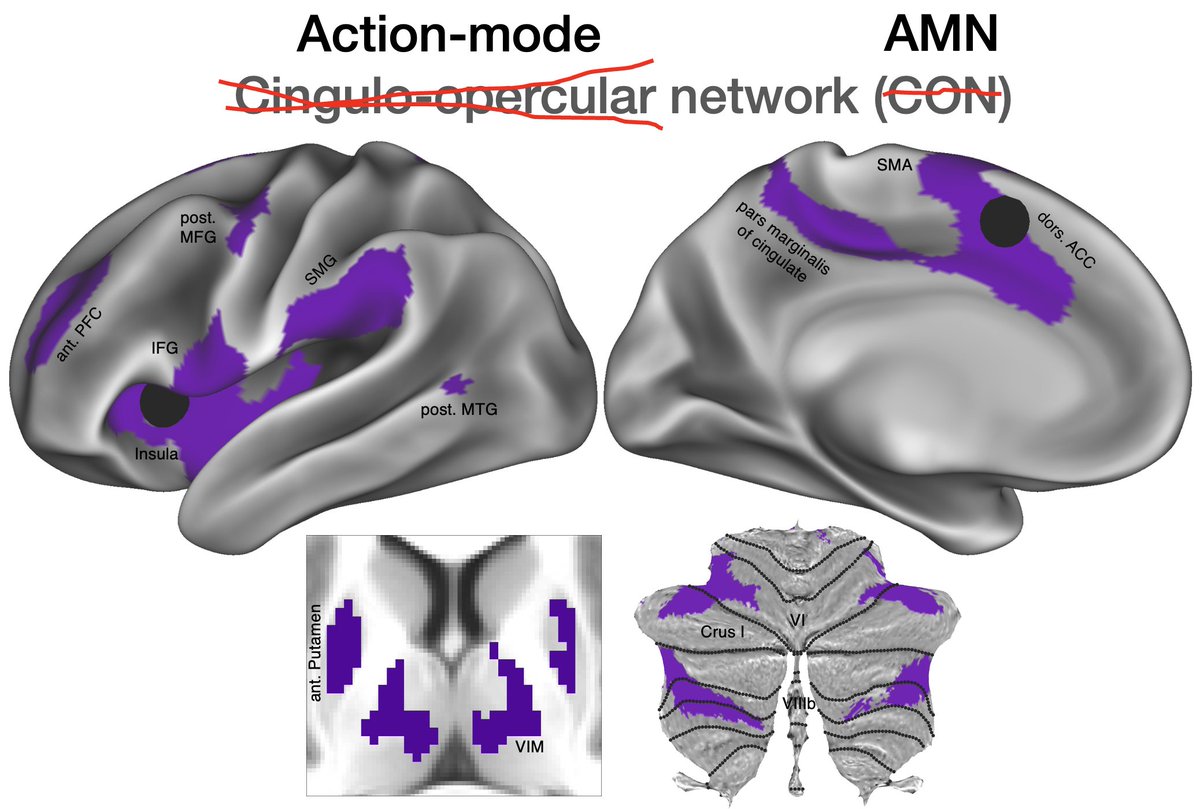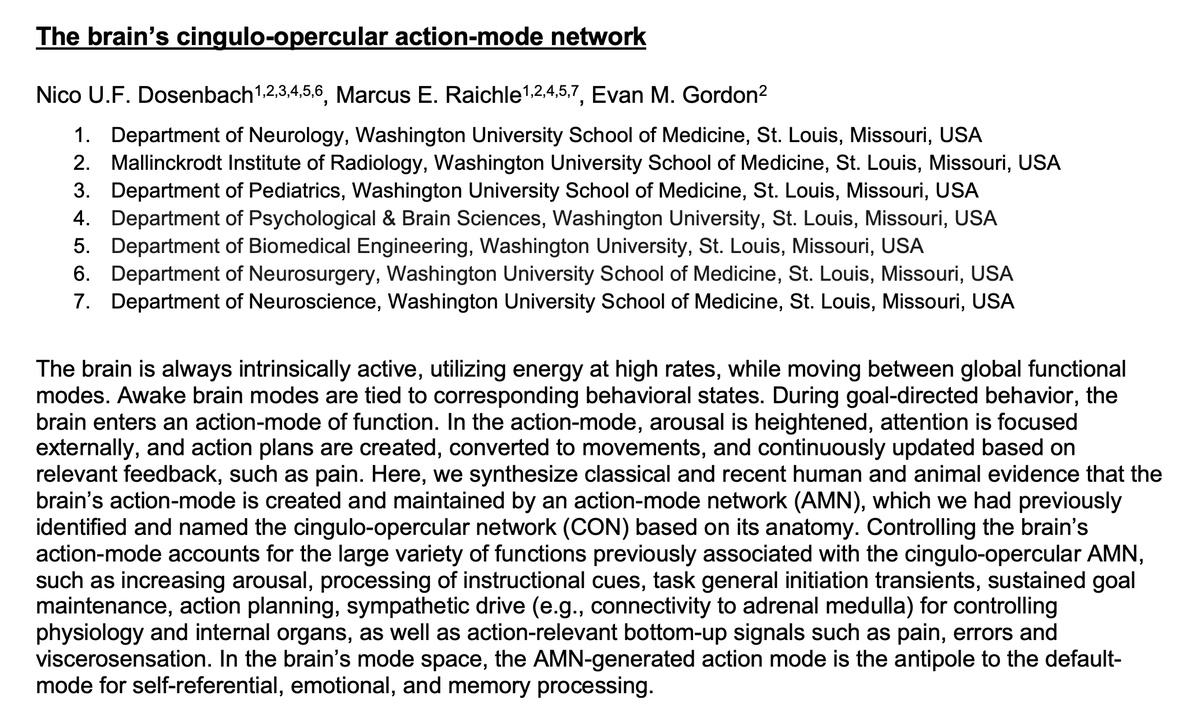
Assoc. Prof. Pediatric Neurology @ WashU School of Medicine; precision #neuroimaging, network plasticity, MSC02, BWAS ≠ fMRI; #neuroscience #openscience #data
How to get URL link on X (Twitter) App


 The AMN was identified with functional connectivity & task fMRI and initially named the cingulo-opercular network (CON) based on anatomy, even though it’s more widely distributed.
The AMN was identified with functional connectivity & task fMRI and initially named the cingulo-opercular network (CON) based on anatomy, even though it’s more widely distributed. 

 Here’s the summary. The active mode is the yin to the default mode’s yang ☯️ … and just as the default-mode network (DMN) has a special role in establishing the (brain-wide) default mode of brain function, the active-mode network (AMN) sets up the action mode. In both cases, an anatomically circumscribed circuit supports a global mode of brain function.
Here’s the summary. The active mode is the yin to the default mode’s yang ☯️ … and just as the default-mode network (DMN) has a special role in establishing the (brain-wide) default mode of brain function, the active-mode network (AMN) sets up the action mode. In both cases, an anatomically circumscribed circuit supports a global mode of brain function.

 It's specifically about BWAS (brain-wide association studies) as defined in the 2nd sentence: ‘studies of the associations between common inter-individual variability in human brain structure/function and cognition or psychiatric symptomatology’. BWAS ≠ neuroimaging
It's specifically about BWAS (brain-wide association studies) as defined in the 2nd sentence: ‘studies of the associations between common inter-individual variability in human brain structure/function and cognition or psychiatric symptomatology’. BWAS ≠ neuroimaging 